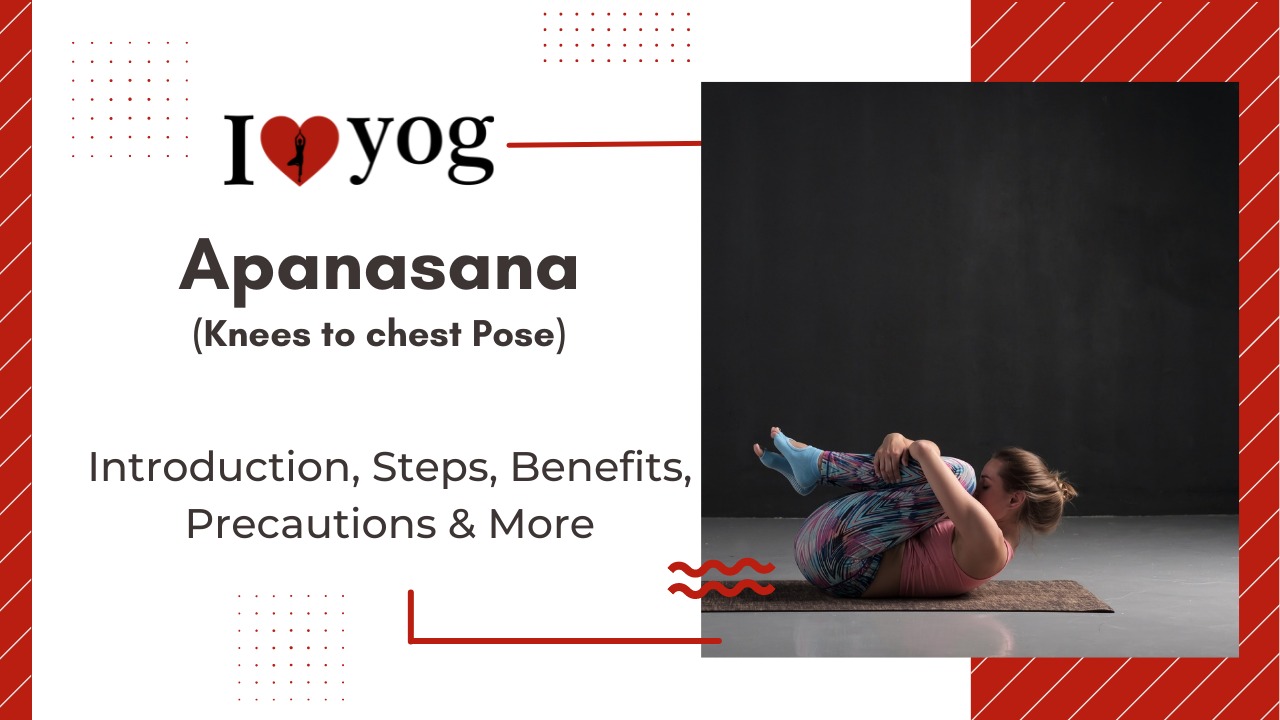What You Need to Know Prior to Performing Apanasana Asana?
The pose should be performed on an empty stomach in the morning. Even if practiced in the evening or at any other time of day, the stomach, bladder, and bowel should be empty. If apanasana asana is practiced at any other time of day outside the early morning, the practitioner should consume food 4 to 6 hours prior to practice. This will ensure that the stomach is empty by the time the individual assumes the posture, and the energy obtained from the food will aid in performing the pose with ease.
Prepared Positions
- Sulabha Pavanamuktasana
- Ardha Pavanamuktasana
Follow Up Pose
- Pavanamuktasana with the head lifted
- Yogasana Level – Beginner
- Yogasana Style – Supine or rejuvenated.
- Yogasana Repetitions – after 30 seconds
- Yogasana Strengthens –
- Yogasana Stretches –
Tri dosha’s reaction to Apanasana /Knee-To-Chest pose
Impact on Doshas and their Subtypes – Because this pose stimulates the digestive organs and enhances digestion, it is beneficial for pachaka pitta and samana vata balance. Since it releases gases from the intestines and is excellent for the reproductive organs, it is an effective treatment for impotence, sterility, and menstrual disorders, and it helps to maintain the balance of apana vata. The position is beneficial for shleshaka kapha and vyana vata balance since it is beneficial for treating arthritis and for the joints. As it calms the mind and increases focus, it restores the balance of prana vata, sadhaka pitta, and tarpaka kapha, as well as the balance of the mind and the mind-contaminating doshas, namely raja and tama characteristics.
How to Perform Apanasana/Knee to Chest Yoga Asana
- Lying on your back, bring both knees to your chest.
- Pull the knees slowly toward the shoulders until you feel a stretch in the lower back.
- Remain in knees to chest stance for 30 to 60 seconds
What Are The Benefits Of Apanasana Pose/Asana?
- The Apanasana pose stretches the lower back, relieves stress, and massages the abdominal organs.
- This position lowers bloating, promotes circulation, and restores energy balance.
- Alleviates digestive issues, such as constipation, irritable bowel syndrome, and gas
- Reduces menstrual cramps
- Stretches the hips
- Performs a massage of the pelvic organs.
- Reduces stress, irritability, and blood pressure
- Stretches and stabilizes the pelvis and low back, hence alleviating low back discomfort.
- Reduces excessive anger, anxiety, and elevated blood pressure.
- Assists in the treatment of muscle guarding, hyperlordosis, sciatic nerve impingement muscle spasm, spinal stenosis, and disc herniation.
What Are the Contraindications and Precautions for Knee-to-Chest Asana?
- Neck, back or hip injuries
- Piles
- Hernia
- Heart disorders
- Elevated blood pressure
- Spinal injury
- Sciatica
- Slip disc
- Hyperacidity
- Stomach ulcers
- Diseases of the testes
- Those who have recently undergone abdominal surgery
Caution
- Do not raise your neck from the ground. Instead, lift your upper back.
- Keep your lower back in contact with the floor and do not allow it to rise.
- Do not strain your neck and other body parts excessively. This may result in strains or injuries.
- Pregnant ladies should avoid this position. It should be avoided even while menstruating.
What Is the Science Behind Knee to Chest Posture?
Due to its ability to eliminate toxins, Apanasana is a wind-releasing pose. Apanasana facilitates bowel movement in the Vata Dosha, hence releasing excess Apan Vayu. Therefore, Apanasana is also known as pawanmuktasana (gas release pose).
Tips for Beginners on Knee to Chest Posture/Asana?
If you are experiencing knee pain, you should bring your bent knee closer to your straight leg. The sartorial muscle, which runs down the inside thigh, can be strained if the knee is positioned at a greater angle. If the discomfort persists, release the position.
Advanced Changes in Pose
- Eka Pada Pavanamuktasana – doing the pose with one leg only
- Dwi Pada Pavanamuktasana – the pose performed with both legs
- Salamba Eka Pada Pavanamuktasana – supported one legged wind relieving pose.
Related Yoga Poses/Asanas –
- Half stance of the Lord of the Fishes
- Camel posture
- Bound angle stance
- Bow pose
Reference:


